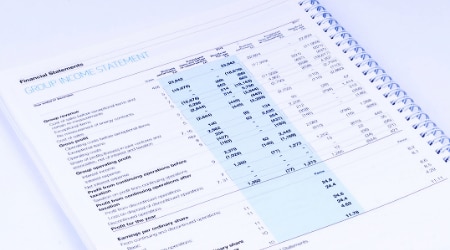Bank Reconciliation Problems
The purpose behind preparing the bank reconciliation statement is to reconcile the difference between the balance as per the cash book and the balance as per the passbook.
Now, the differences between the cash book and passbook balance occur primarily due to the following reasons:
Timing Differences in Recording of Transactions
When you compare the balance of your cash book with the balance showcased by your bank passbook, there is often a difference.
One of the primary reasons responsible for such a difference is the time gap in recording the transactions of either payments or receipts.
Various factors affect such a time gap. These include:
Cheques Issued by the Bank But Not Yet Presented for Payment
When your business issues a cheque to its suppliers or creditors, such amounts are immediately recorded on the credit side of your cash book.
However, there might be a situation where the receiving entity may not present the cheques issued by your business to the bank for immediate payment.
The bank will debit your business account only when the bank pays these issued cheques.
So, this means there is a time lag between the issue of cheques and its presentation to the bank.
Such a time lag is responsible for the differences that arise in your cash book balance and your passbook balance.
Cheques Paid into the Bank But Not Yet Collected or Credited
When your business receives cheques from its customers, such amounts are recorded immediately on the debit side of the cash book.
As a result, the balance as per the cash book increases. However, there may be a situation where the bank credits your business account only when the cheques are actually realised.
It is important to note that it takes a few days for the bank to clear the cheques. This is especially common in cases where the cheque is deposited at a bank branch other than the one at which your account is maintained.
Thus, such a situation leads to the difference between bank balance as per the cash book and balance as per the passbook.
Debits Made by the Bank on behalf of the Customer
At times, your bank may deduct certain amounts associated with various services directly from your bank account without your knowledge.
You come to know about such deductions only when you receive the statement from the bank.
The deductions may include:
- cheque collection charges
- incidental charges
- interest on overdraft
- unpaid cheques deducted by the bank (bounced cheques)
Thus, such debits made by the bank directly from your bank account lead to a difference between the balance as per cash book and the balance as per the passbook.
Direct Deposits into the Bank Account
At times, your customers directly deposit funds into your business’ bank account. But, your business entity does not receive any indication about this until the time it receives the bank statement.
In such a case, your bank has recorded the receipts in your business account at the bank. However, you did not record such a transaction in your cash book. As a result, the balance showcased in the bank passbook would be more than the balance shown in your company’s cash book.
Interest and Dividends Collected by the Bank
Your bank may collect interest and dividends on your behalf and credit such an amount to your bank account.
But, you will record such transactions only in your business' cash book only when you receive the bank statement. Until then, your balance as per the cash book would differ from the balance as per the passbook.
Direct Payments Made by the Bank
At times, you might give standing instructions to your bank to make some payments regularly on specific days to the third parties. For instance, insurance premiums, telephone bills, rent, sales taxes, etc are directly paid by your bank on your behalf and debited to your account.
As a result of such direct payments made by the bank on your behalf, the balance as per the passbook would be less than the balance as per the cash book.
Cheques Deposited or Bills Discounted Dishonored
There are times when your business entity deposits a cheque or draws a bill of exchange discounted with the bank. However, such deposited cheques or discounted bills of exchange drawn by your business entity get dishonored on the date of maturity.
As a result, the bank debits the amount against such dishonored cheques or bills of exchange to your bank account.
Such information is not available to your business immediately. Therefore, you record no entry in the business' cash book for the above items.
You will know about such information only when you receive the bank statement at the end of the month.
As a result, your balance as per the passbook would be less than the balance as per the cash book.
Errors Made by Your Business or your Bank
At times, the balance as per the cash book and passbook may differ due to an error committed by either bank or an error in the cash book of your company.
The following are the errors that can be committed on the part of the bank as well as your company:
Errors Committed by your Business While Recording Transactions
At times, your business entity may omit or record incorrect transactions for cheques issued, cheques deposited, the wrong total, etc.
Such errors are committed while recording the transactions in the cash book. As a result, the balance as per the cash book differs from the passbook.













